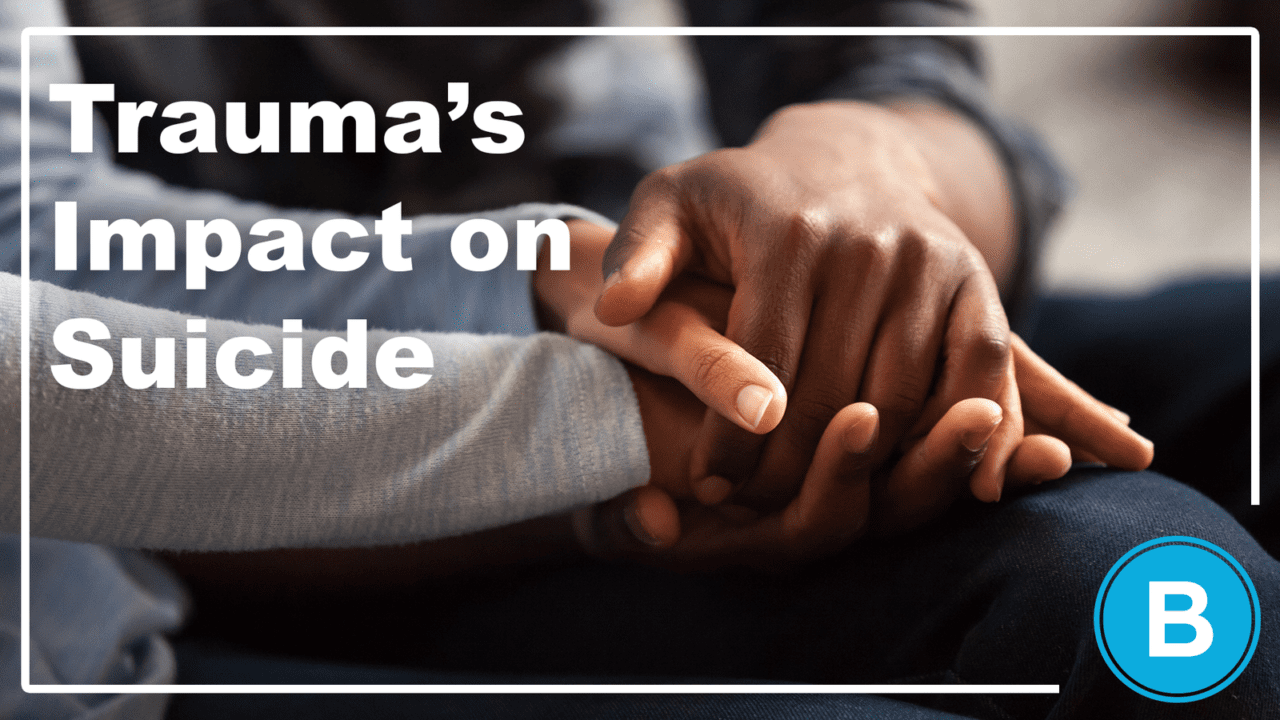
Understanding the Link Between Trauma and Suicide: A Guide for Personal Injury Victims
Suicide is a topic that leaves so many of us uncomfortable to talk about. There’s a fear that if we talk about it, more people will be at risk. In reality, we’ve seen that the opposite is true. As a law firm where all of our clients have faced trauma, this topic hits particularly close to home. The following story, while fictional, is very similar to that of our clients.
Maria, a 28-year-old graphic designer, was the embodiment of youth. With a tight-knit group of friends, a budding career, and a penchant for weekend hiking trips, life was full for her. But everything changed one cold winter evening.
Driving home from work, Maria’s car was T-boned by a distracted driver running a red light. The sheer force of the collision left Maria with a broken arm, a fractured pelvis, and deep cuts on her face. The weeks that followed the accident were a blur of surgeries, hospital stays, and pain medications.
Even though her physical wounds began to heal, Maria’s emotional scars ran deep. She could no longer look in the mirror without being taken back to the accident. The vibrant and outgoing woman was gradually replaced by someone who flinched at the sound of car horns. She began to avoid driving at altogether. She even began withdraw from her close-knit circle of friends.
She lost her job because of extended medical leaves and the anxiety that prevented her from focusing on tasks. As medical bills piled up, Maria was beginning to feel overwhelmed. She felt trapped in a cycle of pain, both physical and emotional. The vibrant world outside seemed so distant, replaced by the dimly lit room she spent most of her days in.
One evening, feeling the weight of her despair, Maria considered ending her life. It seemed like the only way out of the relentless pain and hopelessness. But a timely call from an old friend, who had noticed her withdrawal, became her lifeline. The conversation was the catalyst for Maria to seek therapy and counseling. It was a long road, but with time, support, and therapy, Maria began to rediscover the will to live and rebuild her life.
September is Suicide Prevention Month and we want to draw attention to both the importance of awareness and early intervention. There is no easy, magical fix to preventing suicide. AND, together, when we talk about it and normalize support, we can help create a future without suicide.
My name is Luke, and I’m the primary writer behind this particular piece. Sixteen years ago, I came to the brink of ending my life. I was steps away from an attempt to no longer be living. Something in me didn’t want to die that night and I managed to pull myself away from a permanent end to my temporary pain.
That night, with tears streaming down my face, I heard a voice in my head say, “Luke, I love you and I want you to live.” I decided that I would choose to live. I did. It’s also a practice. While I am in a very healthy mental place today, it has taken years to cultivate the ability to get up each day and be okay with who I am.
This topic is personal. I appreciate how the folks here at Brooks Law Group truly valuing each person’s life. And that’s why I choose to work for such a firm. It’s not enough to just cut checks to community projects. It’s about being active in the community to love and serve all people.
In this article, my aim is to help layout the risk factors that leave those in need of an injury lawyer face. There is so much stigma surrounding anxiety, depression, and suicide. It leaves so many of us feeling uncomfortable talking about it, whether it’s something we face or a loved one is going through. At the end, I’ll lay out some resources and thoughts on cultivating hope. My intent is that this will serve as a light to offer grace and hope for those struggling.
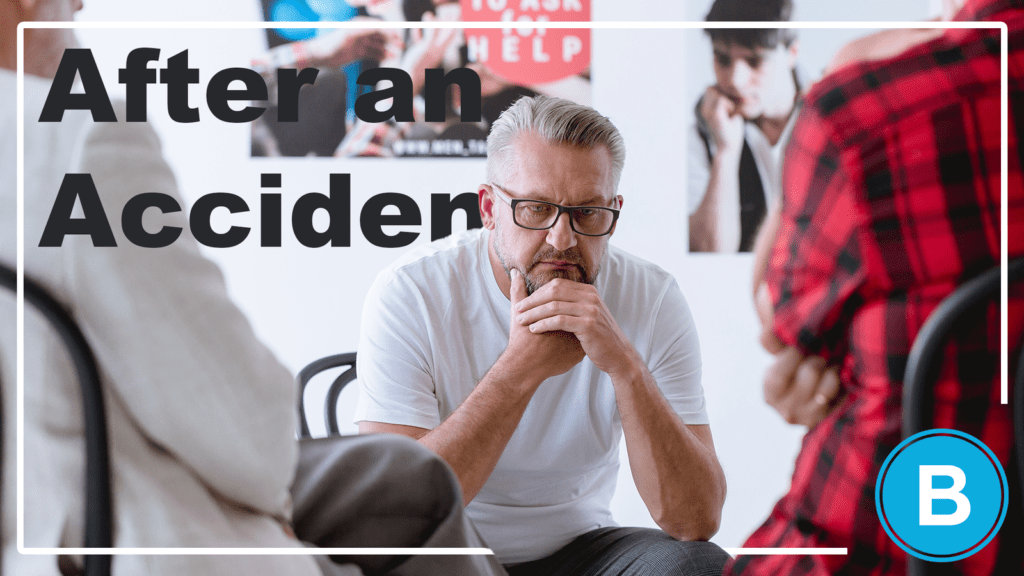
How Trauma of Accidents & Injuries Can Affect Suicide
When someone has been injured in a car accident or they’ve lost a loved one due to wrongful death, trauma is always part of it. Some folk are less affected than others. This isn’t a sign of weakness or strength. It’s simply a matter of different people’s brains are affected differently.
If someone is calling our law firm, it’s never because something good has happened in their life. If our client is still living, they’ve suffered significant physical harm. Based on the present understanding of suicide, we want to help people understand see how accidents may influence risk factors for suicide. And we want folk to see that they’re not alone and that it’s not weird or weak or strange if someone is struggling.
Understanding the implications of each category is helpful in creating a supportive environment. Whether it’s chronic pain, disability, loss of physical abilities, or dependence on medications, these all demand recognition, compassion, and proactive support.
In each of the following six sections, we’re going to highlight aspects that leave those harmed or injured at a greater risk for suicide. These are not exhaustive lists. Some folk may only experience a few of these while others might struggle with many. These lists are intended to help start to paint the truth that those suffering after an accident have a lot affecting them.

Chronic Pain and Suicide Risk Factors
Chronic pain has profound implications for an individual’s psychological and emotional well-being. Its pervasive nature can amplify feelings of hopelessness, especially when pain becomes a constant companion.
| Depression and Anxiety | Chronic pain is a known contributor to feelings of desolation and clinical depression. |
| Sleep Disturbances | Pain-related sleep interruptions can exacerbate mood disorders and increase suicidal ideation. |
| Social Isolation | Due to pain, many retract from social interactions, increasing feelings of loneliness. |
| Reduced Quality of Life | Constant pain impedes the enjoyment of daily activities, leading to decreased self-worth. |
| Substance Abuse | To cope with the pain, some turn to alcohol, drugs, or misuse prescription medications. |
| Economic Stress | Chronic pain incurs medical costs and can prevent consistent employment. |
| Feelings Of Being A Burden | Prolonged suffering may lead individuals to perceive themselves as burdensome to loved ones. |
| Reduced Cognitive Function | Persistent pain can hinder cognitive abilities and promote impulsivity. |
| Treatment Challenges | Failed pain treatments can deepen feelings of desperation. |
| Stigma and Misunderstanding | Invisible pain can often be misunderstood or dismissed by others. |
Recognizing the intricate relationship between chronic pain and emotional health is crucial. Addressing not only the physical pain but also its emotional ramifications can provide a lifeline to those grappling with its overwhelming influence.
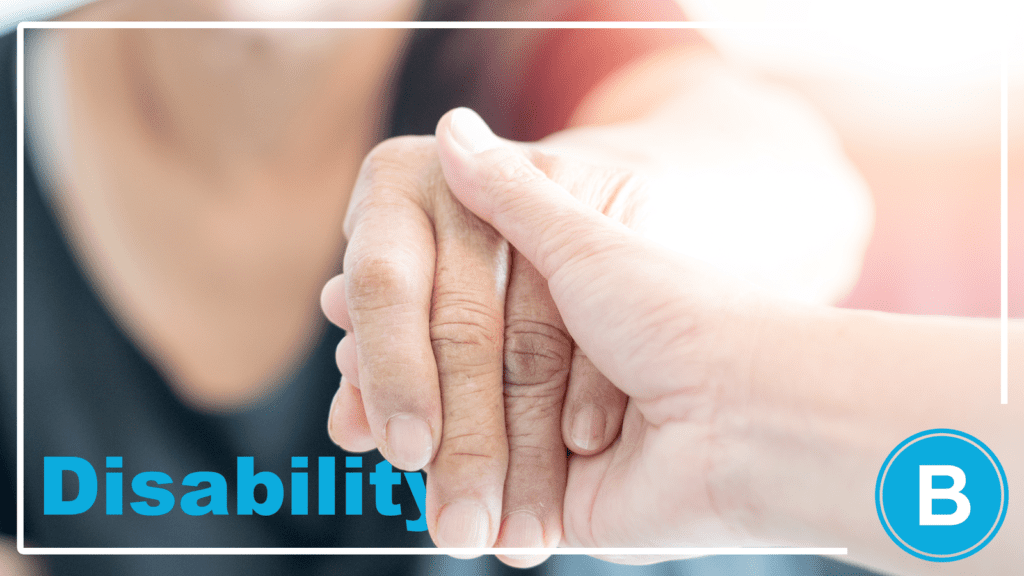
Disability and Suicide Risk Factors
The onset of a disability, particularly when sudden, can be a massive shift in a person’s life. The journey of coming to terms with a new way of living can be fraught with emotional challenges.
| Loss of Independence | Disabilities can restrict self-sufficiency, leading to feelings of helplessness. |
| Grieving the Past | Grieving one’s previous physical state can lead to prolonged sadness or depression. (Note that grieving is also an important and healthy emotional process.) |
| Loss of Autonomy | Reduced abilities might necessitate dependence on others. |
| Barriers to Enjoyment | Activities once loved may become inaccessible or challenging. |
| Self-Esteem Decline | Altered physical capacities can diminish self-worth. |
| Social Retreat | Some may withdraw, fearing judgment or pity from others. |
| Economic Impacts | Job loss or unable to get jobs that pay similarly to those previously held can lead to financial stresses. |
| Isolation | Reduced mobility can lead to physical and emotional isolation. |
| Health Complications | The loss might be tied to broader health issues, causing additional distress. |
| Adaptation Struggles | Adapting to new physical realities can be mentally taxing. |
| Frustration | The disparity between desire and ability can cause persistent frustration. |
The psychological implications of a disability are vast and complex. Providing a supportive and understanding environment is critical in helping those navigating this profound life change.

Loss of Physical Abilities and Suicide Risk Factors
The loss of physical abilities, whether sudden or gradual, forces a reevaluation of one’s place in the world. This shift can lead to emotional turbulence as individuals grapple with their altered capacities.
| Grieving the Past | Grieving one’s previous physical state can lead to prolonged sadness or depression. (Note that grieving is also an important and healthy emotional process.) |
| Loss of Autonomy | Reduced abilities might necessitate dependence on others. |
| Barriers to Enjoyment | Activities once loved may become inaccessible or challenging. |
| Self-Esteem Decline | Altered physical capacities can diminish self-worth. |
| Social Retreat | Some may withdraw, fearing judgment or pity from others. |
| Economic Impacts | Job loss or unable to get jobs that pay similarly to those previously held can lead to financial stresses. |
| Isolation | Reduced mobility can lead to physical and emotional isolation. |
| Health Complications | The loss might be tied to broader health issues, causing additional distress. |
| Adaptation Struggles | Adapting to new physical realities can be mentally taxing. |
| Frustration | The disparity between desire and ability can cause persistent frustration. |
Navigating the world with reduced physical abilities is hard. So much of our identity can be tied into what we can and can’t do physically. When this is altered or taken from us, it can create a really difficult journey. Providing empathy, patience, and support can help individuals find their footing in this new chapter of life. Dependence on Medications and Suicide Risk Factors Medication dependence, especially when relating to pain management or mental health, carries a variety of ramifications. The reliance on external substances for normalcy can be emotionally taxing for some.
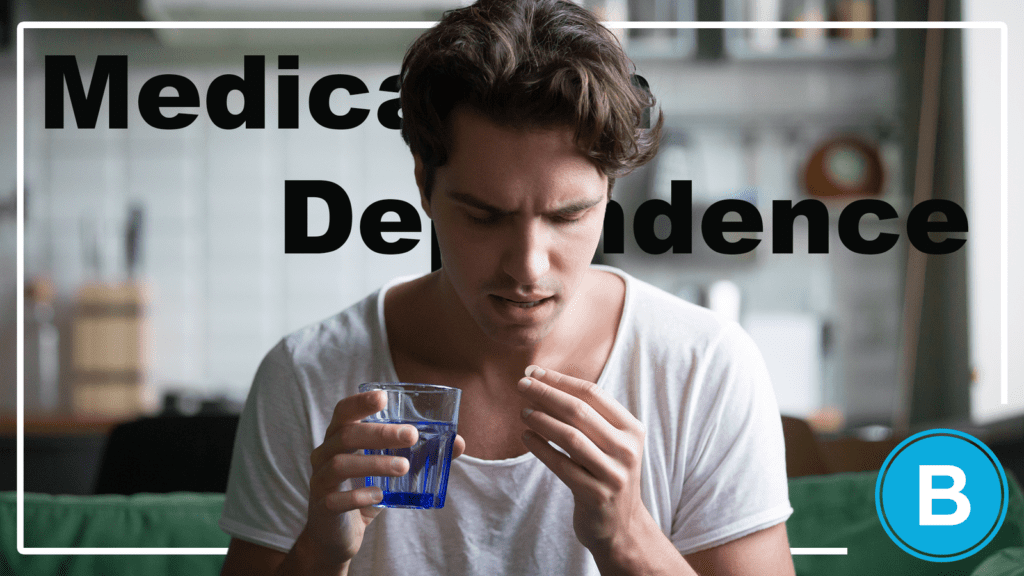
Dependence on Medications and Suicide Risk Factors
Medication dependence, especially when relating to pain management or mental health, carries a variety of ramifications. The reliance on external substances for normalcy can be emotionally taxing for some.
If you’re working with a medical or mental health professional, there is nothing wrong using the medications prescribed. In fact, we encourage you to listen to your medical professionals and lean on them for guidance. If you’re struggling, please make sure you discuss with them all of your experiences so they can best serve you.
| Side Effects | Some medications can cause mood fluctuations or depressive symptoms. |
| Stigma | There’s often societal judgment attached to long-term medication use. |
| Economic Burden | The continuous need for medications can strain finances. |
| Fear of Dependency | The realization of dependency can lead to thoughts of being weak. |
| Withdrawal Symptoms | Missing a dose might lead to physical or psychological withdrawal. |
| Loss of Control | Dependence can create feelings of not being in control of one’s life. |
| Identity Issues | Some may struggle with the notion of needing medication to “be themselves.” |
| Interaction with Alcohol | Mixing medications with alcohol can exacerbate negative feelings. |
| Barriers to Treatment | The fear of dependency might deter some from seeking necessary medical treatments. |
| Concerns about Longevity | Worry about the long-term effects or availability of medications can increase anxiety. |
Navigating medication dependence can be tricky. Medical professionals are seeking to help patients, which is not always straightforward when so much pain, physical and emotional, is at play. The patients are wanting to just have their life back. After an accident, it’s not that simple. Open conversations, devoid of judgment, can help those navigating the complexities of dependence.
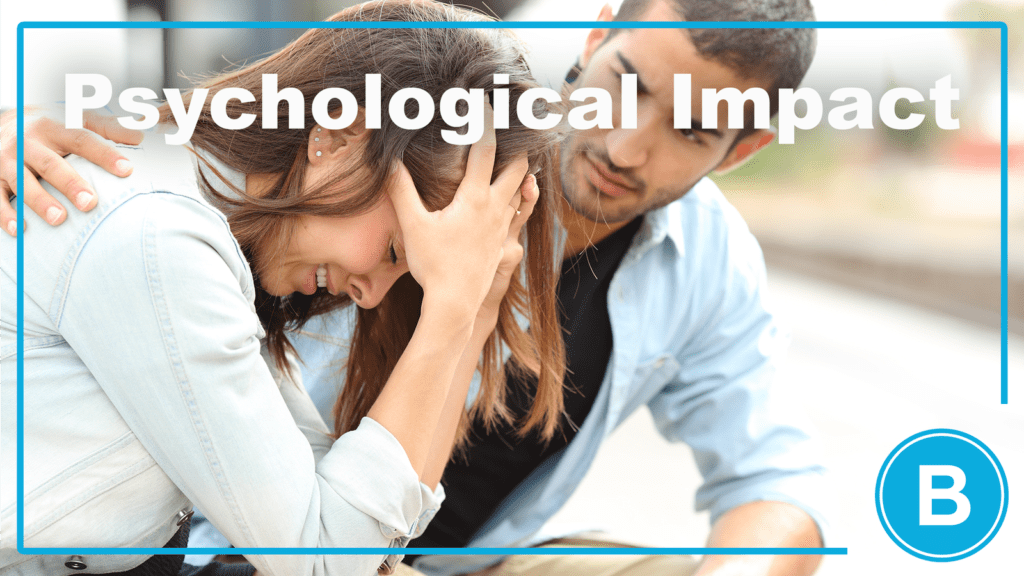
Emotional and Psychological Impact and Suicide Risk Factors
Traumatic events can cause profound emotional and psychological disturbances. The internal landscape can change, making emotions and thoughts hard to navigate. When we feel helpless to the thoughts in our brain, it can leave some feeling hopeless. Some find themselves facing despair. And that is why this is so important to talk about openly and without judgement.
| PTSD | Post-traumatic stress disorder can cause flashbacks, nightmares, and severe anxiety, which might amplify suicidal ideation. |
| Generalized Anxiety | A pervasive worry about future harms or repercussions can erode mental peace. |
| Depression | Feelings of hopelessness, sadness, and an inability to find pleasure in previously enjoyable activities can increase. |
| Survivor’s Guilt | Those who survive traumatic events might grapple with guilt, questioning why they survived when others didn’t. |
| Mood Fluctuations | Extreme mood swings, irritability, or aggression can make emotional regulation challenging. |
| Loss of Trust | Trauma can erode trust in others and the world at large, making connection difficult. |
| Disassociation | Some might feel detached from themselves or their surroundings, creating a sense of unreality. |
| Avoidance Behaviors | An inclination to avoid reminders of the trauma can lead to isolation. |
| Hyperarousal | Constantly being on edge or an exaggerated startle response can lead to exhaustion and despair. |
| Intrusive Memories | Repeatedly reliving the traumatic event can intensify distress. |
The aftermath of trauma on the mind is…a lot, to put it simply. You might be starting to see just how much people can be affected by an accident. Whether it’s a birth injury or a loved one in a cycling accident, these things can dramatically affect our lives. Further complicating it is the fact that some will not be as or so obviously affected. This can heighten the thoughts of loneliness and that there’s something wrong with ourselves when we’re struggling. NO. You are not weak and there is not anything wrong with you. Together, we seek to highlight that these emotional and psychological implications require comprehensive care, patience, and time
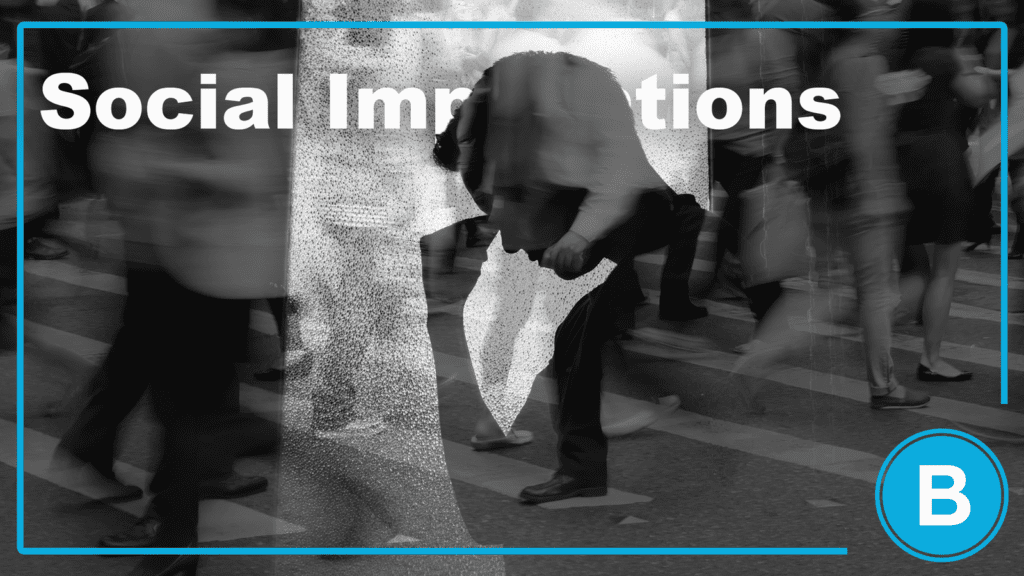
Social Implications and Suicide Risk Factors
The ripple effects of trauma extend into the social realm, often reshaping an individual’s interactions with the world and others. This altered social landscape can heighten feelings of loneliness and despair.
We might look around and think, “Everyone else looks like their doing fine.” Then our pain can be exacerbated because we think we’re the only ones struggling like this. Or, even if we can see beyond that, we may still feel quite down about who we are in the world.
| Alienation | Trauma survivors might feel misunderstood, leading to a sense of estrangement from peers. |
| Isolation | Either self-imposed or due to societal stigmas, isolation can compound feelings of loneliness. |
| Dependency | A newfound reliance on others for physical or emotional support can alter dynamics, potentially leading to feelings of being a burden. |
| Strained Relationships | Trauma can stress relationships, creating rifts between loved ones. |
| Loss of Social Roles | Shifts in familial or societal roles can erode self-worth and identity. |
| Perceived Burden | The belief that one’s trauma is a weight on loved ones can increase feelings of guilt and worthlessness. |
| Communication Barriers | Trauma survivors might struggle to articulate their feelings, leading to misunderstandings. |
| Stigma | Societal misconceptions about trauma can lead to judgment, further isolating the individual. |
| Reduced Social Participation | Avoiding social situations for fear of triggers can lead to diminished connection. |
| Overprotectiveness | Well-intentioned loved ones might become overprotective, inadvertently amplifying feelings of incapacity. |
Rebuilding our social lives after trauma can be a challenging process. For the loved ones of those struggling, consider how you can help create understanding and open channels of communication. This can help foster connection, healing, and support.
When looking at trauma through these lenses, it’s evident that its ramifications are deeply interwoven into every aspect of an individual’s life. Addressing each facet with empathy, understanding, and support can make a significant difference in the trajectory of recovery and healing.
Soon we will move on to resources. Before that, let’s take a quick look at what can leave someone who is injured at greater risk depending on their pre-existing risk factors.
Pre-Existing Risk Factors
The truth is that some of us are already at an increased risk for suicide before an accident. Understanding this helps us have both compassion for ourselves and others. It’s crucial to remember that seeking support is NOT a sign of weakness. This is about understanding what may leave some more than others at risk for suicide.
Understanding the challenges individuals face after trauma underscores the importance of comprehensive care and can lead to more holistic healing and support.
Pre-Existing Mental Health Conditions
For those already coping with mental health conditions, depression, anxiety, or bipolar disorder), the added stress of an accident can be overwhelming. This combination of pre-existing conditions with new traumas can make emotional regulation challenging and may escalate symptoms. This combination between the trauma of the accident and the pre-existing condition(s) can further complicate treatment and recovery.
Lack of Social Support
Accidents or traumatic events can sometimes lead to physical or emotional changes that make individuals feel distant from their usual support systems. They might feel misunderstood, or they may withdraw due to physical limitations or emotional pain. For those facing trauma who don’t already have adequate social support, the road to recovery becomes steeper, making it more difficult for individuals to find hope and resilience.
Financial Stress
Medical bills, combined with potential loss of income due to an inability to work, can become a source of significant distress. This financial burden can lead to a cascade of worries about fulfilling family responsibilities, maintaining quality of life, or even affording basic necessities. For those already facing financial stress, the added burdens following the accident can intensify feelings of hopelessness, especially if the individual feels trapped in their circumstances.
Substance Misuse
Following trauma, some individuals might turn to drugs or alcohol as coping mechanisms. Those with a history of substance misuse may be at an increased risk for doing so following an accident. While these substances might offer momentary relief or numbness, they can also exacerbate feelings of depression or despair. Additionally, substance misuse can hinder recovery, create additional health issues, and further alienate the individual from their support system.
Past Suicide Attempts
Those who have attempted suicide in the past often carry with them a heightened risk of future attempts. The trauma of an accident can reignite those feelings of despair or hopelessness. Recognizing and addressing this risk is crucial. These individuals often need additional layers of support, understanding, and mental health care to navigate the aftermath of a traumatic event.
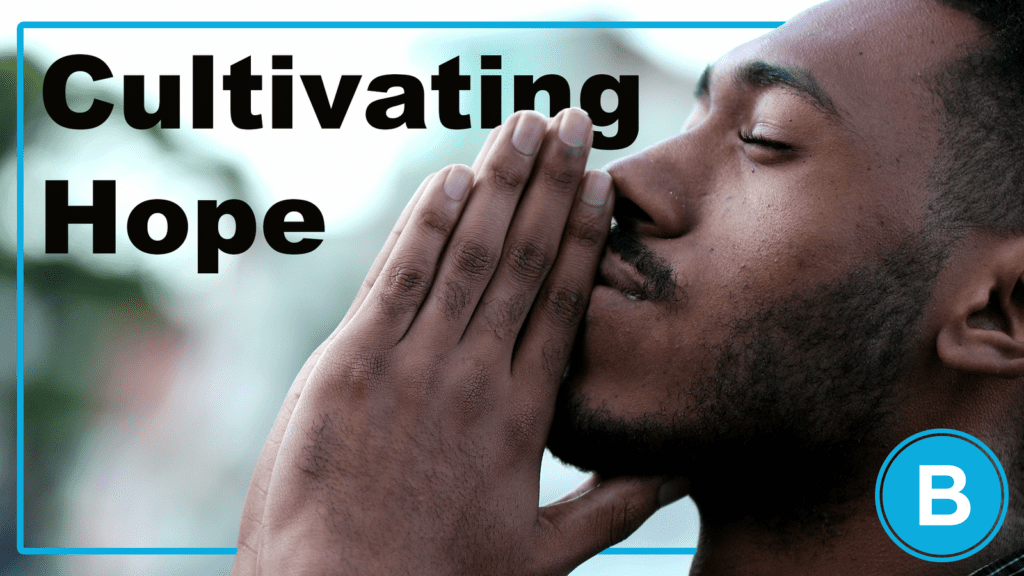
Cultivating Hope After a Traumatic Accident
If you or a loved one have been injured in an accident or lost a loved one, trauma has occurred. For some, it’ll show up in obvious ways and in others it’ll be harder to detect, yet still affecting our daily lives. We encourage anyone facing trauma to seek help. Cultivating hope is easier said than done AND there are steps you can take. Doing this proactively can help support your own mental health.
Seek Professional Help
In the aftermath of trauma, navigating emotions and mental health challenges can be daunting. Professional help can provide the tools and guidance needed for recovery.
Therapists, psychologists, and psychiatrists are trained to understand the intricacies of the human mind, especially during distressing times. They offer a non-judgmental space to process feelings, trauma, and concerns. Beyond just talk therapy, these professionals can suggest coping strategies, cognitive-behavioral techniques, and, if necessary, medications to manage symptoms. Their objective guidance can be pivotal in reshaping one’s outlook and facilitating healing.
And yes, there is a stigma around mental health professionals. Many of us at Brooks Law Groups work with therapists in order to navigate our own lives. This isn’t a sign of anything wrong; rather, this is about tapping experts to help us live fulfilling lives.
Connect with Others
Human connection offers solace and understanding. Finding those who share similar experiences can be a beacon of hope.
Support groups, community organizations, and online forums provide platforms for trauma survivors to come together. Sharing stories, challenges, and triumphs can validate feelings and offer perspectives on coping. Knowing one is not alone in their journey can be empowering and provide a sense of community and belonging.
We humans are hardwired for connection and belonging. Yet, sometimes, we talk as though needing our fellow humans is a sign of weakness. No. Instead, it is a sign of us living precisely as we are designed.
Set Small Goals
Recovery is a journey, often marked by ups and downs. Breaking it down into manageable steps can make the path more navigable. Don’t get caught up in the culture of goals.”
Setting small, achievable goals can create a sense of accomplishment and progress. It might be as simple as getting out of bed at a particular time, taking a short walk, or writing in a journal. Celebrating these milestones, no matter how minor they might seem, can boost confidence and motivation, making the broader journey of recovery feel less overwhelming.
Avoid Alcohol and Drug Misuse
While the allure of substances might seem like a temporary escape, they can have detrimental effects on mental well-being.
Alcohol and drugs can distort perceptions, exacerbate depressive or anxious feelings, and impede genuine emotional processing. Over time, reliance on these substances can lead to addiction, further complicating recovery. Instead of offering relief, they might deepen despair and hinder the healing process. Seeking healthier coping mechanisms and understanding the risks of substance misuse is essential.
Stay Connected
The support of loved ones is a lifeline during trying times. Maintaining these connections can anchor one’s spirit.
Friends, family, mentors, or even colleagues can offer emotional support, practical help, or just a listening ear. These connections serve as reminders that one is valued and not alone. Regularly checking in, sharing feelings, or simply spending time together can significantly bolster emotional resilience.
What Does Hope Look Like to You?
We are sponsors of Light in the Shadows, a program focused on fighting the stigma surrounding suicide and spreading the message that no one is alone. We had a number of interviews collected with folks affected by suicide from across Central Florida. One question we asked many of them was, “What does hope look like to you?
Play The Video “What Does Hope Look Like To You”
As we prepare to transition into resources, it’s imperative to understand that hope is multifaceted. While the abovementioned strategies provide personal avenues to cultivate hope, tangible resources can offer additional layers of support and guidance. Quickly, let’s take a look at isolation and the loneliness epidemic we’re facing as a society.
Loneliness and Isolation in 2023

It might sound like those who have suffered an injury are up against an insurmountable challenge. And recovery can be a long road. Not just the physical recovery, but the process of restoring a life that feels like your own. A life that feels like home to you. A life that feels meaningful.
We’d be remiss if we didn’t at least briefly touch on the epidemic facing Americans. The Surgeon General of the United States, Vivek H. Murthy, published a report earlier this year detailing the breadth and gravity our country is facing with regards to loneliness and isolation.
Here are a few key highlights relevant to how those affected by an accident face challenges that are related to where we are as a society.
Link Between Social Isolation and Suicide
Social isolation has been identified as perhaps the strongest and most consistent predictor of suicidal ideation, attempts, and lethal suicidal behavior. This link holds true across varying demographics, including age, nationality, and clinical severity.
Gender Differences
A study involving over half a million middle-aged adults pointed to different trends between men and women. Among men, the likelihood of dying by suicide more than doubled for those living alone, highlighting the relationship between objective isolation living alone) and suicidal outcomes. For women, there was a significant correlation between loneliness and hospitalizations resulting from self-harm.
Motivations for Self-Harm
An analysis of 40 studies encompassing more than 60,000 older adults revealed that an increase in loneliness was frequently cited as a primary motivation for self-harm.
Various Populations
The relationship between loneliness, social isolation, and suicidality was not limited to a specific age group or setting. Research showed associations between suicidal ideation and loneliness or low social support across various populations, such as residents of nursing homes and other long-term care facilities, cancer patients, older adults in general, and adolescents.
The Perceived Burden
The connection between loneliness, low social support, and suicidal tendencies might stem from individuals feeling a lack of belonging or perceiving themselves as a burden to others.
Strong Protective Factors
Given the extensive evidence, the report suggests that social connection might be one of the most significant protective factors against self-harm and suicide, even for individuals with severe underlying mental health challenges.
The data from Vivek H. Murthy’s report highlights how much isolation and loneliness are already affecting American’s. Compound this with the trauma of an accident and one’s physical and mental health are at greater risk.
If you’re interested, a significant portion of the report is dedicated to what we can do as a society to combat loneliness. You can read it here
Remember: the goal here is to paint a picture why personal injury victims are facing an uphill battle, both due to where society is as a whole and in response to the accident and injury itself. You are not alone in your struggles and there are good reasons to struggle. Now, let’s wrap this up with a discussion of resources.
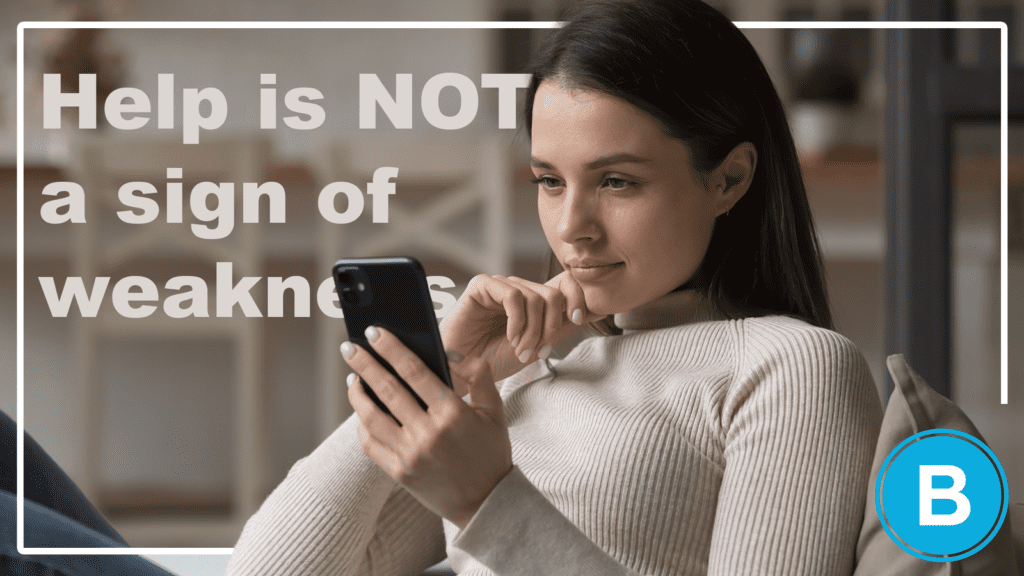
Resources
If you are struggling with suicide, please know that your pain is both real and something many others of us have faced. It is NOT a sign of weakness.
I know the weight of shame that comes from facing suicide. After walking away from my suicide attempt in 2007, I hardly told anyone about it for the next twelve years. This was out of shame. I stuffed it down and denied my pain. When I started sharing about suicide, I discovered I was far less alone than I realized. It was the stigma surrounding suicide that left me silently stuffing down my shame. I share this as an invitation to consider reaching out for help.
Many of us survivors of suicide lean heavily on these.
National and Local Helplines
Immediate help is often just a call or text away.
National Suicide Prevention Lifeline: Available 24/7, this lifeline offers support to those in distress and connects callers with local crisis centers. Call 1-800-273-TALK (8255) for assistance.
Crisis Text Line: For those who prefer texting, you can text to 741741 to communicate with a trained crisis counselor.
Lifeline: You can text or call 988 to connect with someone to support you if you are facing suicidal ideation.
The Crisis Center of Tampa Bay is a group providing 24/7 support for those struggling with a number of crisis, including suicidal thoughts.
Counseling Centers
Professional guidance can offer coping tools and strategies for recovery.
Local Counseling Centers: Check with local community health organizations for counseling services that cater to different budgets and needs.
Online Platforms: Websites like BetterHelp and TalkSpace offer remote therapy sessions with qualified professionals, making it easier for those who might be unable to leave home or prefer online consultations.
Support Groups
Finding a community of those with shared experiences can be healing.
Survivors of Suicide: A support group that offers a space for those who’ve lost a loved one to suicide or are battling suicidal thoughts themselves.
Trauma Survivors Network: This group focuses on helping trauma survivors and their families rebuild their lives.
Local Community Centers and Hospitals: They often host support groups for trauma survivors and individuals facing mental health challenges.
NAMI Hillsborough is a great resource in the Tampa area looking to connect with others impacted by mental health.
Educational Resources
Knowledge is empowering and can provide deeper insights into one’s feelings and experiences.
Books:
“The Body Keeps the Score” by Bessel van der Kolk delves into how trauma affects the body and mind and offers pathways to recovery.
“Reasons to Stay Alive” by Matt Haig discusses the author’s personal experience with depression and suicidal thoughts, shedding light on the journey of recovery.
Websites:
- American Foundation for Suicide Prevention: Provides research, resources, and support for those affected by suicide.
- SAMHSA’s National Registry of Evidence-based Programs and Practices: Offers a range of educational resources on mental health, substance use, and trauma.
- Workshops: Local mental health organizations and community centers often organize workshops that delve into coping strategies, emotional well-being, and recovery post-trauma.
For Loved Ones
Supporting someone in distress requires understanding, patience, and the right tools.
- Have a Conversation. When someone is facing suicidal ideation, it’s important to create space for them to share. The American Foundation for Suicide Prevention has a wallet brochure designed to help us have conversations with those considering suicide.
- Listen Actively. It’s crucial to offer a non-judgmental listening ear. Avoid offering solutions unless asked and validate their feelings.
- Educate Yourself. Understand the signs of suicidal ideation, which can range from expressing feelings of hopelessness to withdrawing from social activities.
- Encourage Professional Help. While your support is invaluable, it’s also essential to recognize when professional intervention might be necessary. Encourage them gently to seek therapy or counseling.
- Stay Connected. Regular check-ins, even if brief, can provide a lifeline to someone in distress. Ensure they know you’re there for them.

Standing Together to Spread the Message that No One is Alone
Suicidal ideation isn’t something that tends to just stop overnight. It’s a journey for many of us. One that comes and goes for some and others it is ever present. Our job isn’t to save anyone. Because we cant’. Our job is to love everyone, to support one another, and to intelligently adhere to the research that offers guidance on how to approach the topic of suicide.
As personal injury lawyers, we’ve sat with so many folk in their lowest points in life. Anxiety, depression, and suicidal ideation are not an uncommon occurrence. It is our job to come alongside folks affected and offer them resources. Our hope is that by laying out such a vast plethora of risk factors, we are able to help show how natural and reasonable it is for those injured to struggle.












